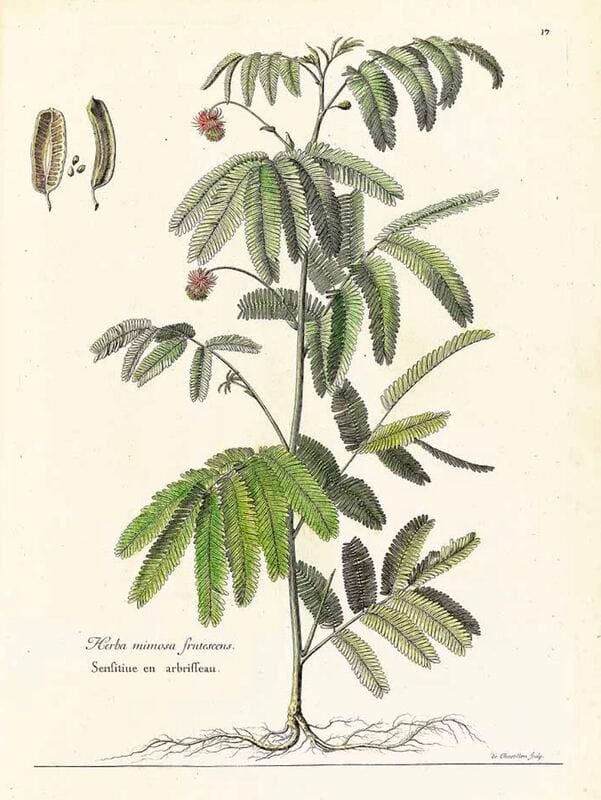Mimosa, Sensitive Plant
Lajjaalu (Ayurveda)Thottalsurungi (Siddha)
Chuyimuyi, Lajwanti (Unani)
Han Xiu Cao (TCM)
 Dodart, D., Recueil des plantes gravées par ordre du roi Louis XIV (1788)
Dodart, D., Recueil des plantes gravées par ordre du roi Louis XIV (1788)Botanical name:
Mimosa pudica (syn. Mimosa aspirata)
Parts used:
Whole Plant; root is also sometimes used
Temperature & Taste:
Cool, dry (Considered mildly Warm in Unani)
Classification:
Uses:
1. Clears Heat, Resists Toxin: (TCM, Ayurveda)
–Common Cold, Fever in children (TCM)
–Bronchitis (TCM); Asthma (Ayurveda)
-Glandular swelling, Leprosy (Ayurveda)
–Toxic Sores (TCM)
-Scorpion Sting (Unani)
-regarded as a blood purifier in Ayurveda
2. Clears Heat and Damp: (TCM, Ayurveda)
–Diarrhea, Dysentery (Ayurveda)
–Hepatitis (TCM)
-Gastritis, Enteritis (TCM)
3. Cools the Blood, Stops Bleeding: (TCM, Ayurveda)
–Hemoptysis, Hematuria, Nosebleeding
–Uterine Bleeding, excess Menstruation
4. Calms the Mind and Spirit: (TCM)
–Insomnia
–Neurosis, Neurasthenia
5. Externally:
–leaf paste is applied to Hydrocele
–applied to Hemorrhoids
–seeds are boiled in vinegar and applied to glandular swellings including Scrofula
Root decoction is used for Gravel and Stones
Dose:
Whole plant in Decoction: 10–20 grams
Infusion of the Whole Plant (1 in 20): 4–8 drams
Juice of the whole plant (or root): 10–20 mls.
Substitute:
Neptunia oleracea is also used for Lajjaalu in some parts of India
Main Combinations:
1. Diarrhea:
i. Mimosa, Salmalia gum, Woodfordia
ii. Mimosa, Red Earth
Major Formulas:
Pushyanuga Churna (Ayurveda)
Cautions:
None noted
Main Preparations used:
Nothing at Present
Nothing at Present
